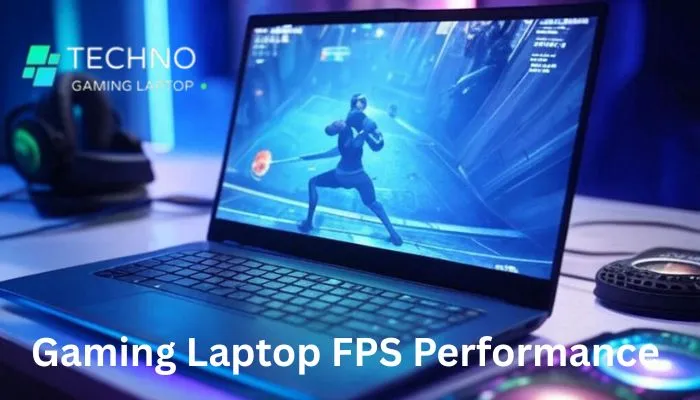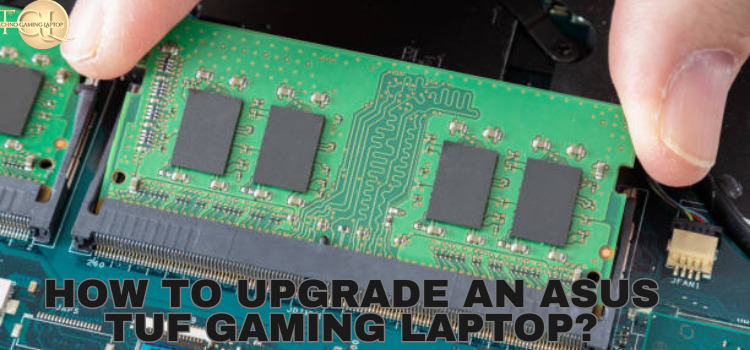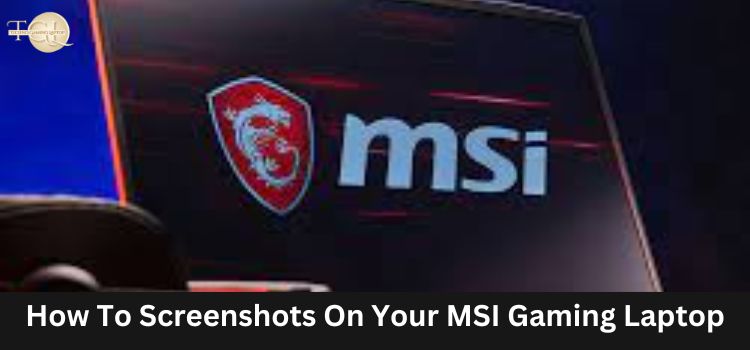Frames Per Second (FPS) measures how many images a gaming laptop’s graphics system can render and display each second. Higher FPS means smoother visuals, which is critical for an immersive and responsive gaming experience.
FPS Ranges Explained (30, 60, 120, 144, 240+)
- 30 FPS: Barely playable; feels sluggish, especially in fast-paced games.
- 60 FPS: Standard for smooth gameplay; ideal for casual gaming.
- 120/144 FPS: Noticeably fluid; preferred for competitive gaming.
- 240+ FPS: Ultra-smooth; maximizes high-refresh-rate displays but requires powerful hardware.
The Impact of FPS on Gameplay Experience
Higher FPS reduces motion blur, improves reaction times, and enhances visual clarity, especially in competitive games like shooters. Low FPS can cause stuttering, input lag, and a disjointed experience, making it harder to track moving objects or aim accurately.
Key Factors Affecting FPS on Gaming Laptops
GPU (Graphics Processing Unit)
The GPU is the primary driver of FPS, handling rendering tasks like textures, lighting, and effects. High-end GPUs (e.g., NVIDIA RTX 4080) deliver better performance in demanding games compared to mid-range or entry-level options.
CPU (Processor)
The CPU manages game logic, AI, and physics FPS calculations. A powerful CPU prevents bottlenecks, especially in CPU-intensive games like strategy titles or open-world RPGs.
RAM (Memory)
Adequate RAM (16GB or more) ensures quick data access for game assets. Insufficient RAM can cause stuttering and lower FPS as the system relies on slower storage.
Display Refresh Rate
The display’s refresh rate (measured in Hz) dictates how often the screen updates. A 144Hz display can show up to 144 FPS, but if the laptop can’t sustain high FPS, the display’s potential is wasted.
Thermal Throttling and Cooling Systems
Laptops generate heat under load. Poor cooling leads to thermal throttling, where the GPU and CPU reduce performance to prevent overheating, lowering FPS.
Game Optimization and Drivers
Well-optimized games run efficiently, boosting FPS. Updated GPU drivers improve compatibility and performance, while outdated drivers can cause crashes or reduced FPS.
Power Settings and Battery Mode
Gaming laptops prioritize performance when plugged in. On battery, power-saving modes often limit GPU and CPU output, significantly dropping FPS.
Benchmarking and Performance Testing
Tools to Measure FPS
Software like MSI Afterburner, Fraps, or in-game overlays (e.g., NVIDIA GeForce Experience) display real-time FPS. These tools also track GPU/CPU usage and temperatures.
How to Run Benchmark Tests
Benchmark tests stress the system to measure average FPS. Use built-in game benchmarks or third-party tools like 3DMark. Run tests multiple times at consistent settings for accurate results.
Real-World Game FPS Comparisons
Testing across games reveals performance differences. For example, a laptop may achieve 120 FPS in lightweight titles but struggle to hit 60 FPS in graphically intensive games with ray tracing enabled.
Game-Specific FPS Performance
FPS in AAA Titles vs Indie Games
AAA titles (e.g., Cyberpunk 2077) demand high GPU and CPU power, often requiring lowered settings for decent FPS. Indie games (e.g., Hollow Knight) are less demanding, easily achieving high FPS on mid-range laptops.
eSports Titles and Their FPS Demands
Games like CS:GO, Valorant, and Fortnite prioritize high FPS for responsiveness. Competitive players target 144+ FPS, achievable even on budget gaming laptops with optimized settings.
Ray Tracing and DLSS
Ray tracing enhances visuals but heavily reduces FPS. Technologies like NVIDIA’s DLSS (Deep Learning Super Sampling) use AI to upscale lower-resolution images, boosting FPS without sacrificing quality.
Common FPS Bottlenecks in Gaming Laptops
CPU/GPU Bottlenecking
If the CPU can’t keep up with the GPU (or vice versa), one component limits the other, reducing FPS. Balanced hardware pairings prevent this.
Overheating and Thermal Throttling
Inadequate cooling causes components to overheat, triggering throttling. Dust buildup or weak cooling designs exacerbate this issue.
Background Apps and Software Interference
Running apps like browsers or Discord consumes resources, lowering FPS. Closing unnecessary programs frees up CPU and RAM.
Bottleneck Calculator For Gaming Laptops
Tips to Improve on Gaming Laptop FPS
Update GPU Drivers
Regularly update drivers via NVIDIA, AMD, or Intel’s software to ensure optimal performance and game compatibility.
Adjust In-Game Graphics Settings
Lower settings like shadows, anti-aliasing, or texture quality to boost FPS without drastically impacting visuals.
Enable Game Mode
Windows Game Mode prioritizes gaming performance by limiting background processes. Enable it in Windows Settings.
Undervolting and Overclocking (Advanced)
Undervolting reduces heat, potentially preventing throttling. Overclocking boosts performance but increases heat and requires caution.
External Cooling Pads or Fans
Cooling pads improve airflow, reducing temperatures and maintaining consistent FPS during long sessions.
Display and FPS
Difference Between Refresh Rate and FPS
FPS is the rate at which the GPU renders frames, while refresh rate is how often the display updates. If FPS exceeds the refresh rate, frames are wasted; if FPS is lower, the display feels less smooth.
G-Sync and FreeSync Technologies
G-Sync (NVIDIA) and FreeSync (AMD) sync the display’s refresh rate with FPS, eliminating screen tearing and stuttering for smoother visuals.
How FPS Syncs with High Refresh Rate Screens
High-refresh-rate displays (e.g., 165Hz) fully utilize high FPS, but the GPU must consistently output enough frames to match the display’s capabilities.
Balancing Graphics and Performance
High FPS vs High Graphics
Competitive gamers prioritize high FPS for responsiveness, often sacrificing visual quality. Casual gamers may prefer higher graphics settings for immersion, even at lower FPS.
Optimizing for Competitive vs Casual Gaming
For competitive play, lower settings to maximize FPS. For casual gaming, experiment with medium-to-high settings for a balance of visuals and performance.
FPS Performance on Battery vs Plugged-In
Power Settings and FPS Drop on Battery
Battery mode caps GPU/CPU performance to conserve power, often halving FPS. Adjust power plans to prioritize performance, but expect reduced battery life.
Is It Worth Gaming on Battery Power?
Gaming on battery is viable for lightweight games but impractical for demanding titles due to FPS drops and short battery life. Plugging in is recommended.
FPS Trends Gaming Laptops
Average FPS in Latest Models
Mid-range laptops achieve 60–100 FPS in AAA titles on medium settings, while high-end models hit 120+ FPS with ray tracing enabled.
Performance Gains from New GPUs
GPUs like NVIDIA’s RTX 40 Series and AMD’s RDNA3 offer significant FPS boosts over predecessors, especially in ray-traced games, thanks to improved efficiency and AI features.
Future of FPS in Mobile Gaming Hardware
Predictions for Laptop GPUs and Performance
Future GPUs will likely prioritize power efficiency, enabling higher FPS in slim laptops. Advancements in AI upscaling (e.g., DLSS 4.0) will further enhance performance.
Will Laptops Reach Desktop-Level FPS?
Laptops are closing the gap but face thermal and power constraints. High-end laptops may match mid-tier desktops, but top-tier desktop performance remains elusive.
Conclusion
Summary: What Affects FPS the Most?
The GPU, CPU, cooling, and game optimization are the biggest FPS determinants. Balanced hardware and proper maintenance maximize performance.
Buying Advice
Look for laptops with high-end GPUs (e.g., RTX 4070+), at least 16GB RAM, efficient cooling, and 144Hz+ displays. Prioritize brands with strong thermal designs for sustained FPS.
Frequently Ask Question
What is the most important factor for high FPS on a gaming laptop?
The GPU is the primary factor, as it handles rendering visuals. A powerful GPU, paired with a capable CPU and adequate cooling, ensures high and stable FPS in games.
How can I improve FPS on my gaming laptop without upgrading hardware?
Update GPU drivers, lower in-game graphics settings, close background apps, enable Windows Game Mode, and use a cooling pad to prevent thermal throttling.
Why does my gaming laptop’s FPS drop when unplugged?
On battery power, laptops switch to power-saving modes, limiting GPU and CPU performance to conserve energy, which significantly reduces FPS. Plugging in maximizes performance.
What’s the difference between FPS and refresh rate, and why do they matter?
FPS is the number of frames the GPU renders per second, while refresh rate is how often the display updates. Matching high FPS to a high refresh rate (e.g., 144Hz) ensures smooth, tear-free visuals.
Do technologies like DLSS or ray tracing affect FPS on gaming laptops?
Ray tracing lowers FPS due to its demanding lighting calculations, but DLSS boosts FPS by using AI to upscale lower-resolution images, balancing performance and visuals.





